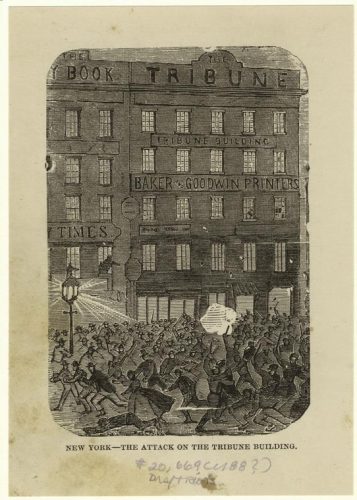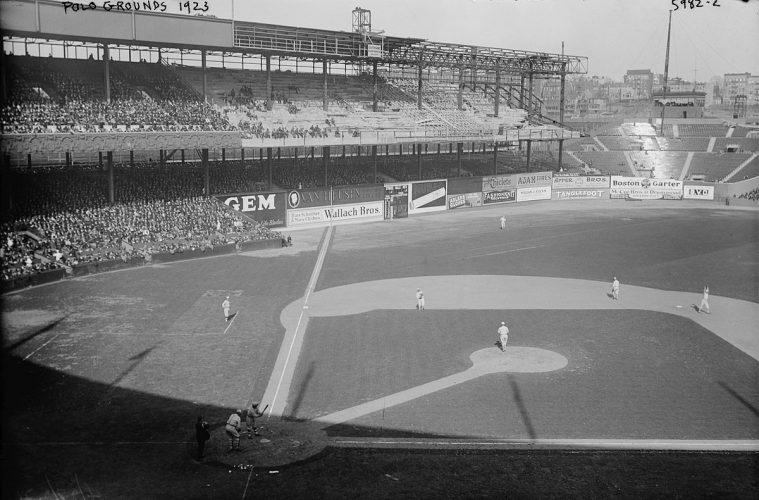Governor’s Island is a large island situated directly in New York Harbor south of the tip of Manhattan. In recent years, Governor’s Island has been converted and used as a New York City park; but for a majority of its history Governor’s Island served as a key military installation for the city. Under Dutch and …
Tag: 19th century
The Draft Riots: Final Thoughts and Bibliography
The riots were quelled when federal troops faced off with rioters on Thursday, July 16th, eventually ending the immediate disarray in New York City. After the riots were over, Governor Horatio Seymour addressed the people of New York City and made a statement to the rioters, “I know that many who have participated in these …
The Draft Riots: Brooklyn
Brooklyn had a free black community as well, called Weeksville. Established in 1838, and allowed economic mobility, intellectual freedom, and was self-sustaining . By the 1850s, Weeksville had over 500 residents, “ boasting more opportunity for homeownership, employment and success for its black residents than any other part of Brooklyn, and well beyond.”[1]. Many African …
The Draft Riots: Staten Island
Staten Island traditional oral history recalls the events of the initial response to the riots as a single noble defense, but in actuality had two outcomes. The main telling goes that citizens in Port Richmond, which was a ‘hop, skip, and jump’ away from Manhattan, pointed a cannon towards the bridge at Bodine’s Creek to …

The Draft Riots: Its Roots and Occurance
The New York City Civil War Draft Riots of 1863: Four Days of Unrest On the morning of July 13th, 1863, the American Civil War had been ongoing for two years. The Emancipation Proclamation was issued by President Lincoln on the first of that year, freeing the slaves. The battle of Gettysburg had claimed its …
The Tombs
Out of all the rioting, the police were noted to “having made only two prisoners whom they carried to the Tombs.” The Tombs is the nickname for City Prison, and was named after its architecture which is based off an Egyptian mausoleum. It lies on top of what was Collect Pond, and extended …
“No More Rioting”
The end of the Fourth of July riots came as a relief not only for the people who were afraid to leave their homes, but also for Mayor Wood. The last day of the riots was described in a front page spread by the New York Times: “At 7 o’clock a party came down from the …
Morrisey and Poole
John Morrissey and William “Bill the Butcher” Poole were the heads of their respective gangs, the Dead Rabbits and the Bowery Boys. Morrissey, an Irishman, was affiliated with Tammany Hall while Poole was an enforcer for the Know-Nothing party, a nativist organization that was against the influx of Catholic immigrants. Their rivalry came to a …
“Bayard is a hard street to travel”
The Fourth of July Riots made such an impact on the city, bands such as the Saugerties band from Hoboken, wrote a song detailing the fight, referencing the “Bloody Sixth Ward.” The extent to which gang life was part of the culture of New York City is evident in the fact that their exploits made …

Polo Grounds
Located off the Harlem River in Manhattan, the Polo Grounds was the home for the New York Giants from 1891 until they moved to San Francisco in 1957. With World Series, Army Navy Games, and even boxing matches held there, the Polo Grounds was one of the most popular establishments in the New York sports …